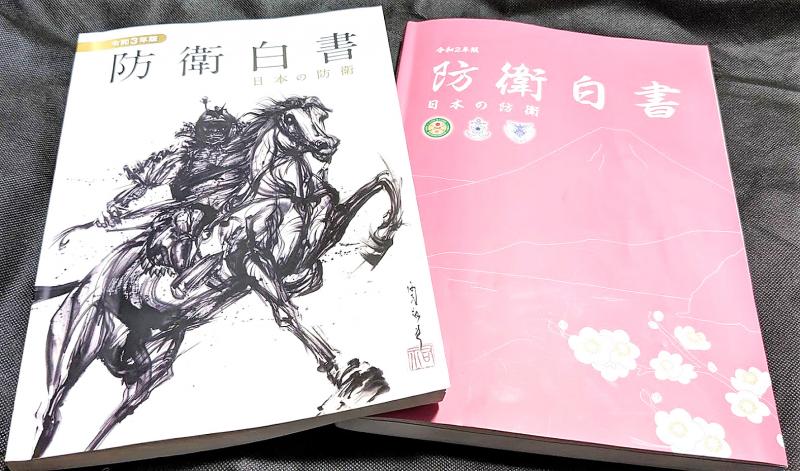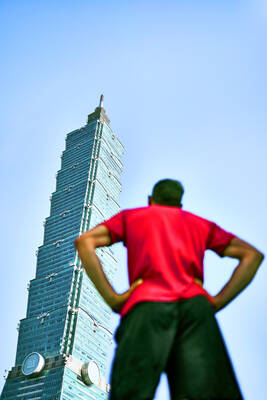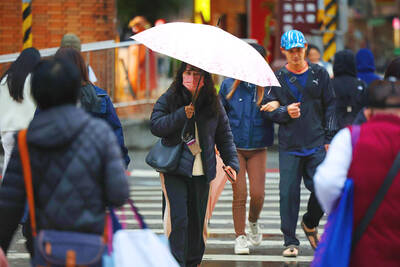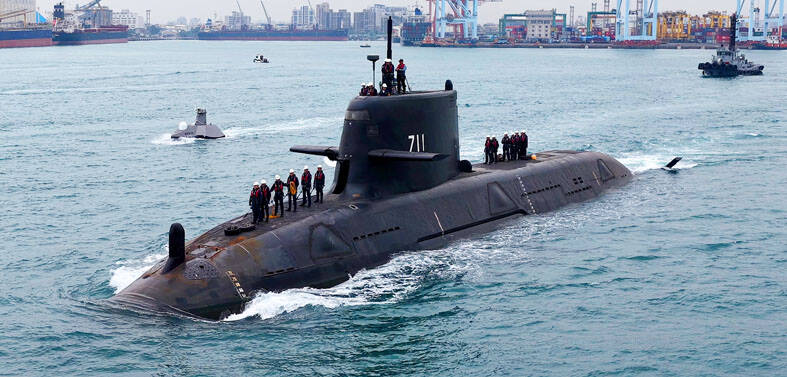Significant changes in Japan’s annual defense white paper, including for the first time a declaration of support for stability in the Taiwan Strait and separate treatment of Taiwan, show Tokyo’s growing affinity and respect for the nation.
The annual report approved by the Japanese Cabinet yesterday mentions China’s “intensified military activities around Taiwan,” including the incursion of Chinese aircraft in the nation’s southwestern airspace amid a growing military imbalance.
It also discusses the clarity of US support for Taiwan through warship transits and arms sales.

Photo: Lin Tsui-yi, Taipei Times
“Stabilizing the situation surrounding Taiwan is important for Japan’s security and the stability of the international community,” the paper says. “Therefore, it is necessary that we pay close attention to the situation with a sense of crisis more than ever before.”
The statement marks a significant shift from previous reports, which have refrained from providing a clear stance on Taiwan.
In the past few months, Tokyo has not been reticent in expressing its opinion that the Taiwan question should be resolved peacefully through dialogue, including in a joint statement with the US at a G7 summit last month.
While the Japanese Ministry of Defense has emphasized that the nation’s basic stance toward Taiwan has not changed, its treatment of the issue in the latest white paper says otherwise.
Perhaps most striking is its decision to move discussion of Taiwan from the chapter on China to a new section on US-China relations, adjusting an arrangement that has long drawn the ire of Taiwanese expat groups in Japan.
Critics have said that relegating Taiwan to a subsection on China could mislead readers into thinking that the Chinese People’s Liberation Army includes Taiwan’s military, when it is Taiwan’s largest and only enemy.
Even though the general focus of the section on US-China relations is on worsening confrontations between the two powers, it still manages to treat Taiwan as its own subject by detailing its developing relations with the US over the past year and military imbalance with China.
Mentioning that the balance is “tilting to China’s favor,” the report also recommends that attention be paid to the improvements of Chinese and Taiwanese forces, US arms sales to Taiwan and Taiwan’s indigenous military developments.
The report also corrects a map of Chinese military capabilities repeated in previous versions that expat groups have long protested should not include Taiwan.
It follows a similar correction of a COVID-19 map by the Japanese Ministry of Health, Labour and Welfare last year at the urging of expat groups.
International readers have also been granted consideration through small changes such as presenting years only in the Western format.
However, the clearest sign of the ministry’s change in stance can be seen in the cover design.
Thirty-four-year-old sumi-e artist Yu-ki Nishimoto was commissioned to design the cover, a bold depiction of a warrior on horseback, with the intention of attracting younger readers.
The image stands in sharp contrast to last year’s cover, a minimalist pink outline of Mount Fuji with cherry blossoms, which was itself a pronounced change from the report’s formerly rigid presentation.

US climber Alex Honnold is to attempt to scale Taipei 101 without a rope and harness in a live Netflix special on Jan. 24, the streaming platform announced on Wednesday. Accounting for the time difference, the two-hour broadcast of Honnold’s climb, called Skyscraper Live, is to air on Jan. 23 in the US, Netflix said in a statement. Honnold, 40, was the first person ever to free solo climb the 900m El Capitan rock formation in Yosemite National Park — a feat that was recorded and later made into the 2018 documentary film Free Solo. Netflix previewed Skyscraper Live in October, after videos

NUMBERS IMBALANCE: More than 4 million Taiwanese have visited China this year, while only about half a million Chinese have visited here Beijing has yet to respond to Taiwan’s requests for negotiation over matters related to the recovery of cross-strait tourism, the Tourism Administration said yesterday. Taiwan’s tourism authority issued the statement after Chinese-language daily the China Times reported yesterday that the government’s policy of banning group tours to China does not stop Taiwanese from visiting the country. As of October, more than 4.2 million had traveled to China this year, exceeding last year. Beijing estimated the number of Taiwanese tourists in China could reach 4.5 million this year. By contrast, only 500,000 Chinese tourists are expected in Taiwan, the report said. The report

Temperatures are forecast to drop steadily as a continental cold air mass moves across Taiwan, with some areas also likely to see heavy rainfall, the Central Weather Administration (CWA) said. From today through early tomorrow, a cold air mass would keep temperatures low across central and northern Taiwan, and the eastern half of Taiwan proper, with isolated brief showers forecast along Keelung’s north coast, Taipei and New Taipei City’s mountainous areas and eastern Taiwan, it said. Lows of 11°C to 15°C are forecast in central and northern Taiwan, Yilan County, and the outlying Kinmen and Lienchiang (Matsu) counties, and 14°C to 17°C

STEERING FAILURE: The first boat of its class is experiencing teething issues as it readies for acceptance by the navy, according to a recent story about rudder failure The Hai Kun (海鯤), the nation’s first locally built submarine, allegedly suffered a total failure of stern hydraulic systems during the second round of sea acceptance trials on June 26, and sailors were forced to manually operate the X-rudder to turn the submarine and return to port, news Web site Mirror Daily reported yesterday. The report said that tugboats following the Hai Kun assisted the submarine in avoiding collisions with other ships due to the X-rudder malfunctioning. At the time of the report, the submarine had completed its trials and was scheduled to begin diving and surfacing tests in shallow areas. The X-rudder,